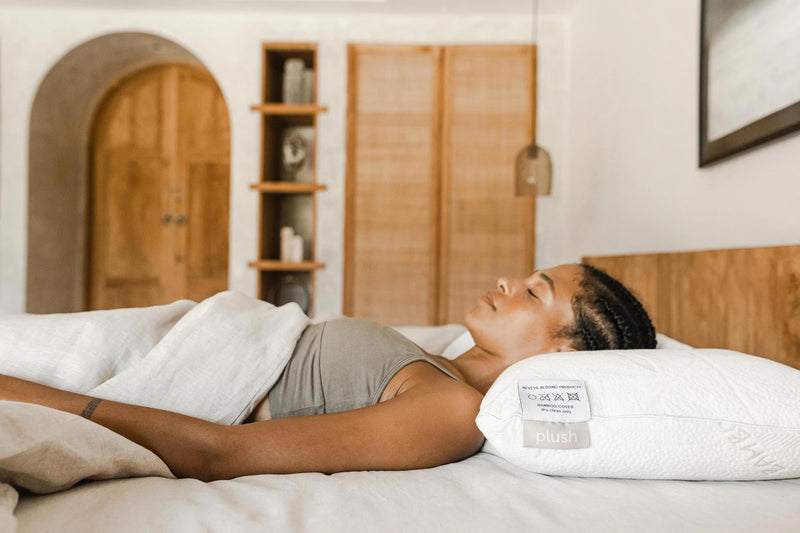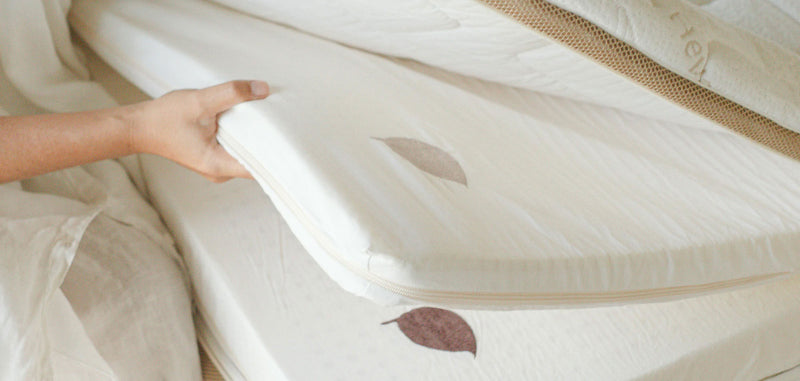Waking up feeling unrested, with a stiff neck or a throbbing headache, is a common complaint. Surprisingly, the nightly companion, the pillow, could be a secret saboteur of sleep. It's not just about feeling tired; it's about how the body is positioned for 7-9 hours every single night. Finding the correct way to sleep on a pillow is crucial for overall well-being.
Millions silently suffer from sleep-related aches and pains. A poorly chosen pillow or an unsuitable sleeping position can misalign the spine, leading to chronic discomfort. Imagine missing out on weekend activities due to a nagging neck ache or losing focus at work from persistent headaches. This domino effect often starts with the pillow.
This article serves as a guide to understanding the often-overlooked connection between pillows, sleeping positions, and overall health. It will delve into different pillow types, explore the best (and worst) sleeping positions for spinal alignment, and help identify the tell-tale signs that a current pillow is past its prime.
Understanding the Importance of Sleep Posture and Pillows
Why does sleep posture matter? During sleep, the body undertakes essential repair and rejuvenation. Improper posture works against the body's natural recovery mechanisms. Using the correct way to sleep on a pillow supports healthy alignment and promotes better rest.

Think of the spine as the central highway for the nervous system. Proper alignment allows signals to flow freely. If the spine is twisted or unsupported, those signals can be disrupted. This is where your pillow matters most. Its primary role is to support the head and neck, ensuring the spine maintains its natural curvature. A good pillow fills the gap between the head and the mattress.
Incorrect alignment during sleep can lead to various issues:
- Back pain: Misalignment puts stress on spinal discs and muscles.
- Neck stiffness: Muscles strain to compensate for a lack of support.
- Headaches: Tension builds in the neck and shoulders, radiating to the head.
- Nerve impingement: Pinched nerves can cause numbness, tingling, or shooting pain.
These consequences can set the stage for years of unnecessary discomfort. By consciously choosing the right pillow and sleep position, individuals directly invest in their long-term health.
Signs Your Pillow is Hurting You
How can one tell if a pillow is the silent antagonist in their sleep story? Here are some clear red flags:
- Waking up with neck pain or stiffness: One of the clearest signs that your pillow isn’t offering proper support.
- Frequent headaches, especially in the morning: Tension in the neck and shoulders often travels upward, leading to early-day discomfort.
- Numbness or tingling in the arms or hands: This may point to nerve compression caused by poor head and neck alignment.
- A flat, lumpy, or misshapen pillow: If your pillow has lost its shape, it's likely no longer supporting you correctly.
- A musty smell or visible stains: Sweat, body oils, and dust mites can accumulate over time, affecting both hygiene and performance.
- Needing to constantly fluff, fold, or adjust your pillow: A reliable pillow should maintain its shape and support with minimal effort.
Ignoring these signs can lead to ongoing discomfort and poor sleep quality. Being aware of them is the first step toward restoring proper rest and protecting your long-term well-being.
A Guide to Finding Your Perfect Match
Navigating the pillow aisle can be daunting. Here’s a breakdown of popular pillow types and their suitability:
Latex
- Pros: Supportive, durable, breathable, and naturally resistant to common allergens like dust mites and mold.
- Cons: Can carry a higher price tag, particularly for 100% natural varieties.
- Best For: All-round comfort. Its responsive support can be tailored to any sleep position depending on the pillow's height (loft).
- Important Note: Opt for natural latex rather than synthetic blends for maximum comfort and sustainability.
Memory Foam
- Pros: Moulds to the shape of your head and neck, offering targeted pressure relief.
- Cons: Can retain heat and may emit an initial odour; price and quality can vary significantly.
- Best For: Balanced comfort and consistent, resilient support. Offers a responsive lift without sinking.
- Important Note: Higher-density foam offers more support but may feel firmer.
Down & Feather
- Pros: Soft and luxurious, moulds easily.
- Cons: Tends to collapse and lose its loft quickly, leading to diminished support over time. Feathers can also shift, creating uneven areas, and there's a potential for allergies.
- Best For: A soft, plush feel. Its ability to compress makes it a good choice for those who sleep on their front and need a lower, flatter pillow.
- Important Note: If choosing this option, consider ethically sourced down.
Polyester Fibre Fill
- Pros: Affordable and easy to look after.
- Cons: Compresses quickly and offers limited long-term support.
- Best For: A budget-friendly, versatile option. It can be found in various heights, but offers less specific support than other materials.
- Important Note: Not ideal for those seeking contouring or longevity.
Buckwheat
- Pros: Adjustable, supportive, and promotes airflow.
- Cons: Can be noisy, and the texture may take some getting used to.
- Best For: Firm, adjustable support. The malleable-yet-firm hulls are ideal for back and side sleepers needing precise neck alignment.
- Important Note: Look for options with a soft inner lining to reduce noise.
Water Pillows
- Pros: Customisable support and adjustable firmness.
- Cons: Can be heavy, with a potential for leaks.
- Best For: Highly customisable support. The firmness and height can be adjusted by adding or removing water, making it adaptable for any sleeper.
- Important Note: Choose models with added comfort layers above the water chamber.
Pillow Comparison Table
| Pillow Type | Support Level | Firmness Level | Breathability |
|---|---|---|---|
|
Latex |
High (Resilient, maintains alignment) |
Soft-Firm (Varies by density) |
High |
|
Memory Foam |
Medium-High (Conforming, stable once moulded) |
Soft-Firm (Varies by density) |
Low |
|
Down & Feather |
Low-Medium (Tends to collapse, loses loft) |
Soft (Very pliable) |
Medium (Can be low when compressed) |
|
Polyester |
Low (Poor loft retention) |
Soft (Very compressible) |
Low |
|
Buckwheat |
High (Solid, customisable) |
Firm (Adjustable by hull removal) |
High |
|
Water Pillow |
High (Customisable, consistent alignment) |
Soft-Firm (Adjustable by water level) |
High (Via outer layers and water's thermal properties) |
The Right Way to Sleep: Optimising Your Sleep Position

If you ever struggle to get comfortable or wake up with neck pain, the cause might be how you are lying on your pillow. A pillow's purpose is to keep your spine in a neutral position by aligning your neck with the rest of your body to support good posture. Here’s how to use a pillow correctly based on your sleep position.
Back Sleeping
This position is best for spinal alignment. However, it can worsen snoring. For back sleepers, a pillow with a thin to medium thickness is ideal. This helps maintain proper alignment for your head, neck, and spine. Your head should be able to sink comfortably into the pillow without tilting too far back. For additional support, consider placing another pillow under your knees to preserve the natural curve of your lower back.
- Pros: Best for spinal alignment, reduces facial wrinkles.
- Cons: Can worsen snoriing and sleep apnoea.
- Pillow Recommendations: A thinner pillow that supports the natural curve of the neck.
Side Sleeping
This is a good position to reduce snoring and acid reflux. Side sleepers need a thicker and firmer pillow for optimal support. The pillow should be substantial enough to fill the entire gap between your ear and your shoulder, ensuring your head and neck remain aligned with your spine. To further align your hips and take pressure off your lower back, place a pillow between your knees.
- Pros: Good to reduce snoring, pregnancy, and acid reflux.
- Cons: Can cause shoulder pain, may contribute to facial wrinkles on the sleeping side.
- Pillow Recommendations: A thicker pillow that fills the space between the head and the shoulder.
Stomach Sleeping
This position is generally the worst for spinal alignment as it forces your neck into a twisted position. If you are a stomach sleeper, it is best to use a very soft, thin pillow, or even no pillow at all for your head. A thick pillow will put even more strain on your neck. To help keep your spine in a more neutral position, try placing a flat pillow under your pelvis.
- Pros: Sometimes reduces snoring.
- Cons: Worst for spinal alignment, can strain the neck, and puts pressure on internal organs.
- Pillow Recommendations: A very thin pillow or no pillow at all. Ideally, avoid stomach sleeping.
Correct Pillow Placement and Common Mistakes
To prevent neck pain, your pillow should fill the gap between your head and mattress, keeping your neck perfectly aligned with your spine.
Should your shoulders be on the pillow?
No. a common mistake is resting your shoulder on the pillow. This elevates your upper body and can throw your spine out of alignment, leading to neck and back pain. Your pillow should be placed right above your shoulders, supporting your head and the natural curve of your neck.
What is the correct alignment?
A good rule of thumb is that a pillow should always keep your neck parallel to the mattress, regardless of your sleeping position. Your neck should not be bent forward, backward, or sharply to one side.
How should you sleep on a contour pillow?
Contour pillows made from memory foam have a unique shape with two ridges. If you sleep on your back, position the pillow so the thicker ridge is under the curve of your neck for support. If you are a side sleeper, you should also use the thicker side under your neck, ensuring it is pushed up against your shoulder.
How to Choose the Right Pillow: A Step-by-Step Guide
This step-by-step guide can simplify the pillow-picking process:
- Consider your sleeping position: Is it primarily back, side or stomach sleeping?
- Assess your body type: Individuals with broader shoulders often need thicker pillows for side sleeping.
- Think about preferences: Is a firm or soft pillow preferred? Do you sleep hot or cold? Are there any allergies?
- Read reviews and ask for recommendations: See what others say. Your doctor or chiropractor may offer recommendations.
- Test out pillows (if possible): Many shops allow trials. Check the returns policy.
Avoid grabbing the cheapest pillow. This is an investment in your health.
Maintaining Your Pillow for Longevity and Hygiene
Maintaining your pillow is crucial for both your health and its longevity. To prevent against perspiration and allergens, always use a pillow protector and wash it frequently. To maintain its cleanliness and freshness, the pillow itself should also be cleaned in accordance with the manufacturer's recommendations. Regularly fluffing your pillow will retain its shape and comfort. Keep in mind that pillows are not meant to last forever. It is advised to replace them every one to two years because they gradually lose their support and can turn into a breeding ground for bacteria, dust mites, and allergens.
Beyond the Pillow: Optimising Your Sleep Environment
While the right pillow is important, your overall sleep environment also plays a crucial role. A good mattress should provide adequate support for your body and your room should remain cool dark and quiet to encourage deeper rest. Reducing noise distractions and maintaining a consistent sleep schedule can significantly improve sleep quality. In addition creating a calming pre-sleep routine, whether it is reading taking a warm bath or practising meditation, can actually send signals to your body that it is time to unwind and prepare for rest.
Elevate Your Sleep with Heveya® Natural Organic Latex Pillow
Finding the right pillow is not just about comfort; it is the critical step towards truly restorative sleep. At Heveya®, we start with the finest foundation: pure, natural organic latex. This remarkable material offers exceptional resilience to perfectly contour to your head and neck, providing consistent, supportive alignment. Its natural open-cell structure ensures outstanding breathability to keep you cool, whilst its inherent hypoallergenic properties create a cleaner, healthier sleep environment, resistant to dust mites and mould. But we believe this is only the beginning of achieving perfect rest.

True comfort is not one-size-fits-all, which is why we have developed a comprehensive collection designed to provide a perfect match for every individual. Our commitment to personalised support is reflected in our calibrated range, featuring pillows numbered one to six, each offering a distinct height and firmness to suit your unique build and preferred sleeping position. This ensures your spine remains in its natural, neutral alignment all night. Our collection is further complemented by specialised options, including a supportive bolster and a gentle junior pillow, guaranteeing that everyone can experience the profound benefits of a pillow engineered just for them.
We make discovering your ideal pillow simple and precise. You can begin your journey from home with our intuitive Online Pillow Selector for an immediate, personalised recommendation. For a truly bespoke experience, we invite you to visit our showroom, where our trained sleep specialists will personally assess your spinal alignment to guide you to your perfect match. A Heveya® pillow is a worthwhile investment in your long-term health and daily vitality. Explore the range today and discover your key to a lifetime of better rest.
Conclusion
Is your pillow helping or hurting? It's time to take a good, hard look at your current sleep setup. Are aches and pains common upon waking? Is your pillow lumpy and misshapen?
Choosing the right pillow and adopting the correct sleeping position, combined with the right mattress, is an investment in long-term health and well-being. Master the correct way to sleep on a pillow to transform your sleep quality.
Remember, long-term health is about making smart choices today. Choose sleep. Choose comfort. Choose well-being.














